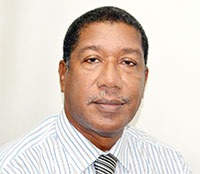I would be the first to admit that treating children is not my first choice, considering categories of patients based on their age. Although most children are cooperative dental patients, some display behaviour that present obstacles to the safe and effective delivery of care. The dentist can use behaviour management techniques to modify the child’s behaviour in these instances.
When using behaviour management techniques in pediatric dentistry, the child’s parents or guardians must be educated on the usefulness and appropriateness of the desired techniques. This is necessary for two reasons. First, it has been shown that informed and educated parents about behaviour management techniques are more positive and accepting of their use. Second, the use of some of these methods may require consent from the parent.
Methods to accomplish control over children who do not cooperate with the dentist include “tell-show-do”, voice control, hand-over-mouth, physical restraint and drug-induced management.
The “tell-show-do” technique is the foundation of all child management.
It involves the dentist first describing to the child exactly what is going to be done, then showing the child what will be done and finally, performing the procedures as previously discussed and shown. When using this technique, it is important to use words for dental instruments and procedures that are suitable for the child’s age.
About 80% of all children above the age of three years, with normal intellectual and emotional development, can be guided successfully through new procedures with this technique.
Voice control is usually described as the dentist assuming a more authoritative role when the child starts to display disruptive behaviour. It can also be described as the dentist constantly speaking to the child in a supportive manner when the latter displays appropriate behaviour.
When using voice control, the facial expression and demeanour of the dentist must mirror the attitude he/she is attempting to convey. It is also important to note that the technique is most effective when applied if inappropriate behaviour is initially observed and less effective when inappropriate behaviour is full-blown.
The hand-over-mouth technique is not commonly used in this country. The purpose of this technique, which calls for the dentist to place their hand over the mouth of a hysterically crying or screaming child, is to gain the child’s attention and establish communication. Thus, the child can hear and begin to communicate with the dentist and learn the cooperative behaviour required for the safe course of treatment.
This technique must be linked with voice control. That is, a cessation of oppositional behaviour is immediately accompanied by removing the dentist’s hand from the child’s mouth and giving positive verbal reinforcement (praise).
Perhaps in Guyana, physical restraint is the most widely used method to ensure that an uncooperative child receives proper dental treatment.
This may involve using a bite block, pedi-wrap, papoose board, or simply having the parent or guardian confine the child’s head, hands or legs while the dentist executes acts which usually intimidate, such as extracting a tooth. It is not advisable to restrain a child over five years old unless it is considered necessary.
The drug most noteworthy for pharmacologic management is nitrous oxide. There are many sedatives that can be delivered orally or by injection. General anaesthesia is also used in particular circumstances.



.jpg)








